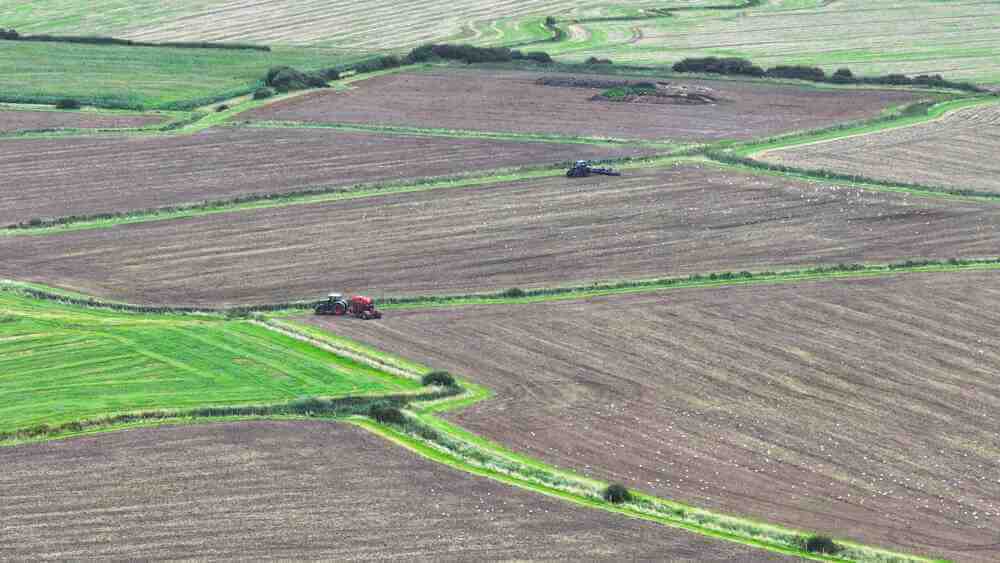Agricultural Land Classification
Agricultural land classification (ALC) is important for developers. All agricultural land is graded from 1 down to 5. The higher the grading the more suitable the land is for growing crops with a high yield such as fruit, vegetables, cereals etc. But how does this affect developers who are looking to build on agricultural land?

According to 2019 government figures, we have over 17.6 million hectares occupying 70% of the UK land. The is graded into various grades depending upon who good the land is to crow crops. Poorer soil might be more suitable to other uses. The highest quality land is known as BMV (best and most versatile). This is grades 1 to 3a.
Natural England have produced guidance as to how developers and the local planning authorities should deal with this land and to ensure that the soil is managed in a sustainable way. These policies work alongside the NPPF (National Planning Policy Framework) and the DMPO (T&C Development Management Procedures 2015). The aim is to safeguard as much as possible BMV land and reserve it for food production and other high worth crops.
Whilst it is not impossible to secure development in BMV areas, you are more likely to get resistance the higher the grading. Therefore it is important for developers to understand the agricultural land classification grading of any and that they might be looking at. This is backed up by the NPFF which encourages the use of less desirable agricultural land first.
In addition to the various grades within the agricultural land classification, we also have urban, non-agricultural, woodland and open water.
- Grade 1: Excellent Quality Agricultural Land (BMV)
- Land with no or very minor limitations to agricultural use. A very wide range of agricultural and horticultural crops can be grown and commonly includes top fruit, soft fruit, salad crops and winter harvested vegetables. Yields are high and less variable than on land of lower quality.
- Grade 2: Very Good Quality Agricultural Land (BMV)
- Land with minor limitations which affect crop yield, cultivations or harvesting. A wide range of agricultural and horticultural crops can usually be grown but on some land in the grade there may be reduced flexibility due to difficulties with the production of the more demanding crops such as winter harvested vegetables and arable root crops. The level of yield is generally high but may be lower or more variable than Grade 1.
- Grade 3: Good to Moderate Quality Land (BMV)
- Land with moderate limitations which affect the choice of crops, timing and type of cultivation, harvesting or the level of yield. Where more demanding crops are grown yields are generally lower or more variable than on land in Grades 1 and 2.
- Subgrade 3a: Good Quality Agricultural Land (BMV)
- Land capable of consistently producing moderate to high yields of a narrow range of arable crops, especially cereals, or moderate yields of a wide range of crops including cereals, grass, oilseed rape, potatoes, sugar beet and the less demanding horticultural crops.
- Subrade 3b: Moderate Quality Agricultural Land
- Land capable of producing moderate yields of a narrow range of crops, principally cereals and grass or lower yields of a wider range of crops or high yields of grass which can be grazed or harvested over most of the year.
- Grade 4: Poor Quality Agricultural Land
- Land with severe limitations which significantly restrict the range of crops and/or level of yields. It is mainly suited to grass with occasional arable crops (e.g. cereals and forage crops) the yields of which are variable. In moist climates, yields of grass may be moderate to high but there may be difficulties in utilisation. The grade also includes very droughty arable land.
- Grade 5: Very Poor Quality Agricultural Land
- Land with very severe limitations which restrict use to permanent pasture or rough grazing, except for occasional pioneer forage crops.
- Urban
- Built-up or ‘hard’ uses with relatively little potential for a return to agriculture including: housing, industry, commerce, education, transport, religious buildings, cemeteries. Also, hard-surfaced sports facilities, permanent caravan sites and vacant land; all types of derelict land, including mineral workings which are only likely to be reclaimed using derelict land grants.
- Non-agricultural
- ‘Soft’ uses where most of the land could be returned relatively easily to agriculture, including: golf courses, private parkland, public open spaces, sports fields, allotments and soft-surfaced areas on airports/ airfields. Also active mineral workings and refuse tips where restoration conditions to ‘soft’ after-uses may apply.
- Woodland
- Includes commercial and non-commercial woodland. A distinction may be made as necessary between farm and non-farm woodland.
- Agricultural Buildings
- Includes the normal range of agricultural buildings as well as other relatively permanent structures such as glasshouses. Temporary structures (e.g. polythene tunnels erected for lambing) may be ignored.
- Open water
- Includes lakes, ponds and rivers as map scale permits.
You can view the agricultural land classification via Defra Magic maps. Or you can discuss the maps and any likely impact upon proposed developments on a Zoom call with Ian, the founder of Planning Geek
Other Agricultural Sections
- Agriculture & Equestrian Home Page
- Part 6 - Class A - Development of 5 ha or more
- Part 6 - Class B - Development of under 5 ha
- Part 6 - Class C - Mineral working
- Part 6 - Interpretation of Classes A to C
- Part 6 - Class E - Forestry developments
- Part 3 - Class Q - Agricultural to residential - Pre 21/4/24
- Part 3 - Class R - Flexible Commercial use
Agricultural Land Classification Updated: 11th January 2024



